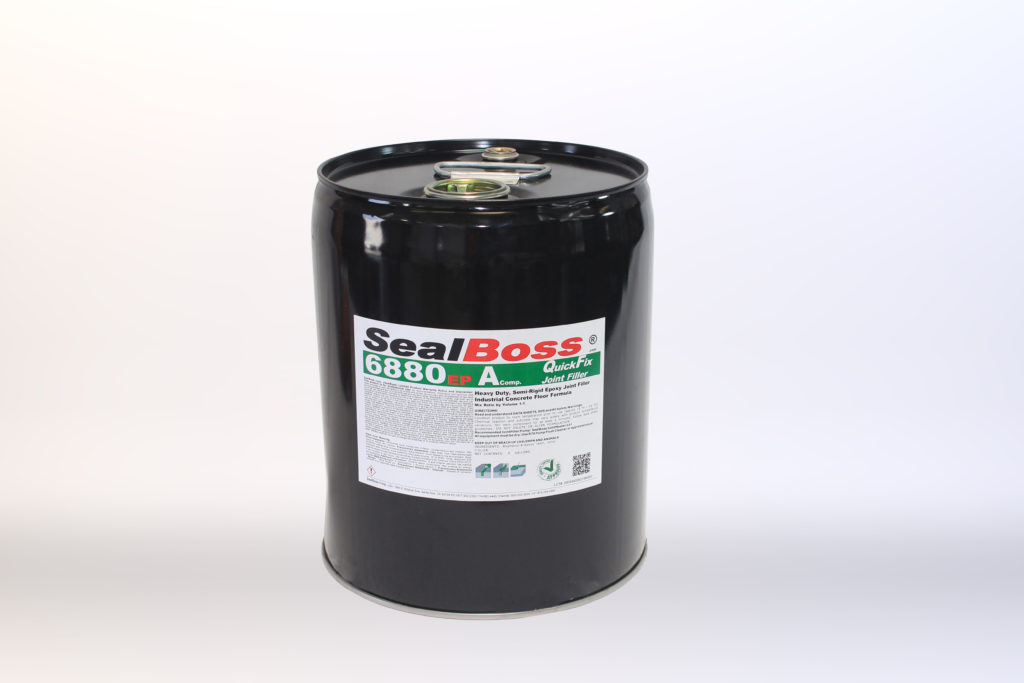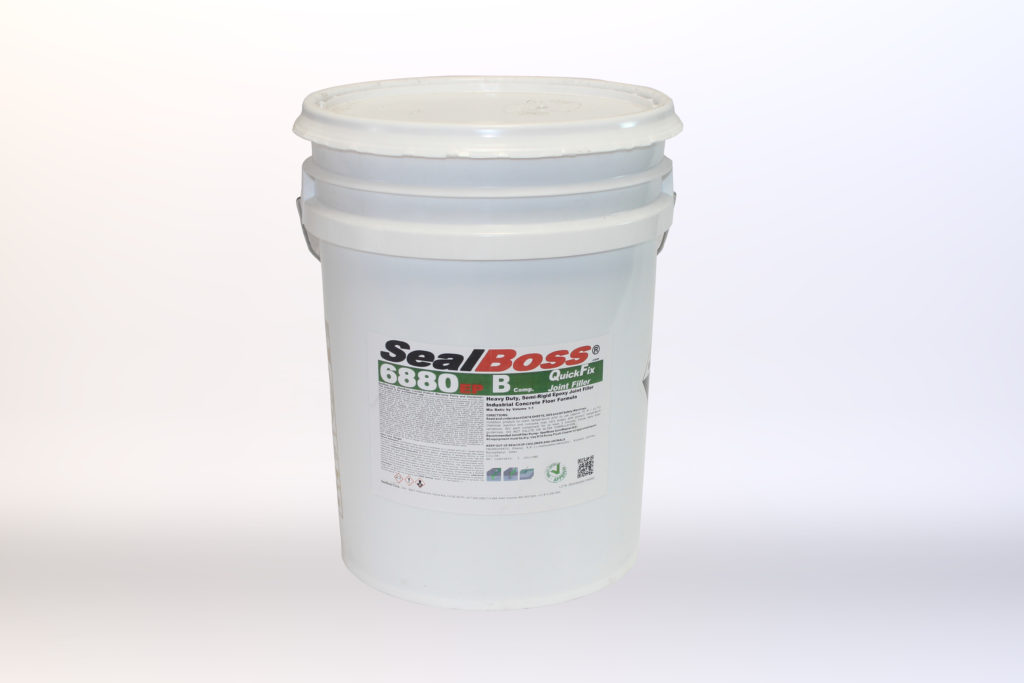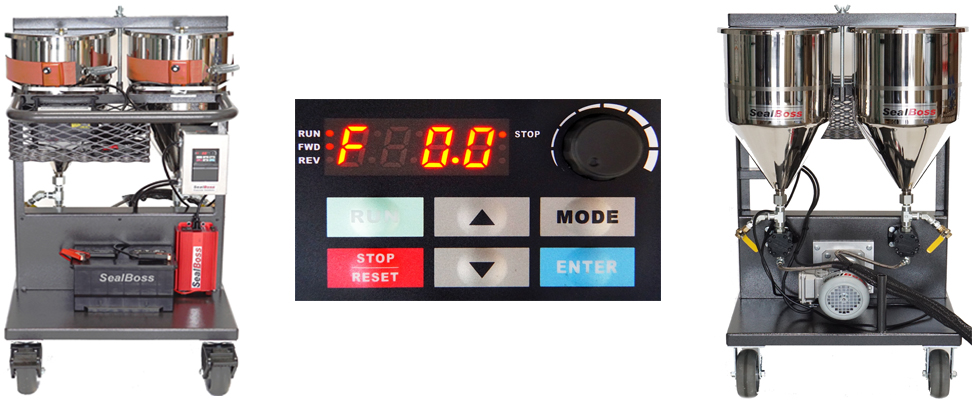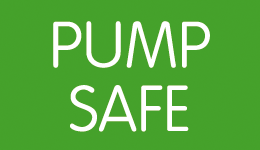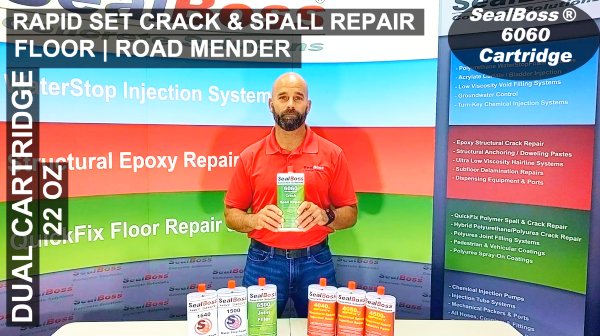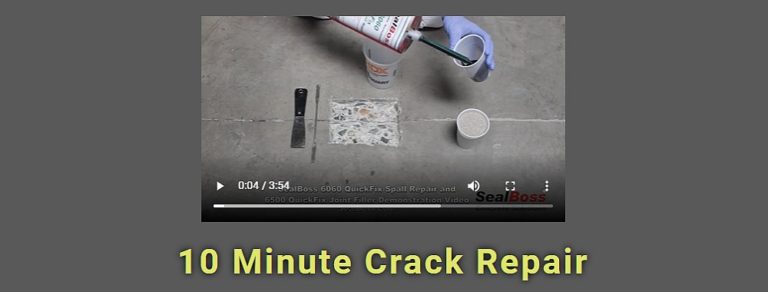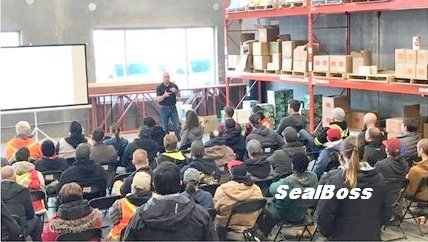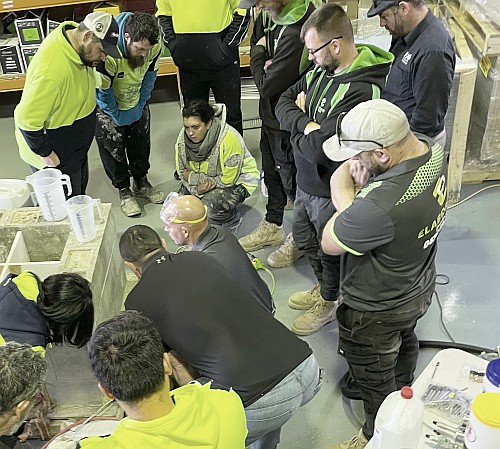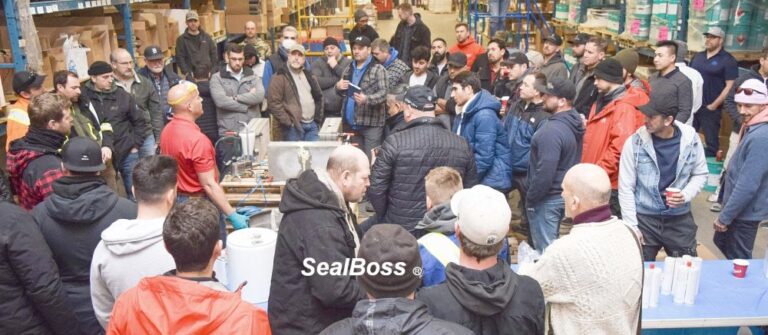SealBoss 6880
Epoxy Joint Filler
Industry Standard Epoxy Joint Filler
Epoxy Joint Filler
SealBoss ® 6880 EP QuickFix Advantages
- Class 5-9 Concrete Floors, applications which receive heavy vehicle traffic, such as fork lifts or steel wheeled carts
- 1:1 Mix Ratio
- Load-Supporting Rigidity
- Spall-Preventing Strength
- Movement-Permitting Flexibility
- 100% Solids Epoxy Formulation
- VOC Free
- ACI, PCA Guidelines Compliant
- USDA/FDA Compliant
SealBoss Epoxy Joint Filler to Fill Concrete Joints, Mend Concrete Floor Cracks and Repair Surface Defects
Product Description
SealBoss ® 6880 EP QuickFix is a two component, 1:1 ratio, low viscosity, heavy duty, epoxy joint filler designed to protect joints and joint edges in industrial concrete floors from traffic and load related damages and spalling. The product is also suitable for standard floor joint and floor crack repair.
SealBoss ® 6880 EP QuickFix joint filler bonds tightly to the sides of concrete joints, prevents contaminant and water penetration, and delivers high wear resistance and durability. The ambient temperature range for the cured product should be from 40°F (10°C) to +120°F (50°C). SealBoss ® 6880 EP QuickFix is designed for use on concrete floors. References: 03251 (expansion/contraction joints), 03300 (cast-in-place concrete) and/or 03930 (control joint sealers). Ask your SealBoss ® technician for details. The product is for professional use.
Installation Guidelines
SealBoss ® 6880 EP QuickFix should be applied to full joint depth in dry and dust-free saw-cut control joints at a depth of 2 in (5 cm), see ACI and PCI guidelines. Very deep shrinkage cracks beyond the saw-cut depth may be sealed with a 1/4″ (0.6 cm) layer of clean, dry silica sand prior to applying the product. Note: Use of Backer Rod may de-stabilize the load bearing properties of the product. If reduced load bearing properties are acceptable, Backer Rod can be used in through-slab construction (cold) joints if a minimum of 2 in (5 cm) of depth remains for product. To ensure adequate adhesion, ACI recommends a slab cure of 60-90 days or longer to permit for greater concrete shrinkage/joint opening, lessening the expected incidence of joint filler separation. 28 day cure times should be considered the absolute minimum. Floor temperature and product temperature must be between 60-90°F (16-33°C) during the application for complete cure. Temperatures below 50F (10°C) will inhibit the cure.
SealBoss® QuickFix Joint Filler Technology is based on the latest developments in polyurea, polyurethane, and epoxy formulations.
The SealBoss® 6500 QuickFix Line offers new properties in terms of application speed, low temperature cure, durability and feasibility. SealBoss ® 6500 QuickFix is a high quality joint and crack filler for concrete substrates in applications that are time critical. It works well in adverse temperature conditions as the material cures in ambient temperatures from -28°C (‑20°F) to 54°C (130°F). The tack free time is 5 to over 15 minutes depending on temperature. This permits to reopen the jobsite to traffic just one hour after application in most conditions.
The SealBoss® 6880 EP QuickFix offers heavy duty properties at traditional gel times. SealBoss ® 6880 EP QuickFix joint filler bonds tightly to the sides of concrete joints, prevents contaminant and water penetration, and delivers high wear resistance and durability. The ambient temperature range for the cured product should be from 40°F (10°C) to +120°F (50°C). SealBoss ® 6880 EP QuickFix is designed for use on concrete floors.
The SealBoss® 6060 QuickFix provides high strength solutions to compliment the Joint Filler products. To ensure a complete chemical cure, color and desired physical properties it is important to premix the product components each sufficiently, condition it to room temperature and to follow the preparation guidelines closely. As with any chemical product, the conditions during the application determine the quality of the results.
Please read guidelines that help ensure a smooth fit and finish and longevity of your repair. Follow the basic application steps for successful joint filling and crack repair applications. Timing For Product Installation The American Concrete Institute (ACI) recommends minimum cure of 30 days before installing joint filler material to prevent adhesion failures, and to allow control and construction joints time to settle to their ultimate width through the concrete cure & shrinkage process. In a controlled freezer/cooler environment floors should be stabilized at general operating temperatures for 7 days prior to installation. Installation should be done during the thermal contraction period of the concrete when it is colder. In hot climates morning hours suit that purpose. High concrete temperatures may accelerate cure process unevenly.
Preparation Of Joints And Cracks It is essential that all cracks and joints are dry at the time of application. Presence of moisture from outside sources or internal concrete moisture content, can cause bubbling and blistering in the cured product. Such affected product must be cut, removed, and reapplied. It is recommended that all cracks be chased and all joints be cut with dustless concrete saw with a diamond blade. The blade must be run along both joint walls (in one pass in narrow joints) to restore concrete surfaces to clean, bare condition. Joints must be completely free of concrete dust and other debris and must be cleaned to their full depth or 2 inch minimum. The absence of debris and freshly cut edges provide the necessary surface to which the polyureas adhere. Any crack and joint contamination and large variations in width and joint proportions may affect the physical properties of the material and joint dynamics and can lead to adhesive or cohesive separations. In most cases when detected early after a fresh installation, separation can be addressed with the addition of more material to the separated areas. Note: In certain scenarios structural failures can cause crack and joint separations running the entire way through the repaired areas . This is not a product failure and must be addressed by structural strengthening of the slab or substrate.
Recommended: Double Pass Method Many potential problems, such as uneven depth, moisture reactions and leakage into the substrate can be minimized by applying the jointfiller in two passes following in short sequence. The first pass should be a quick effort to apply an initial layer of product to the substrate and seal the surface. Any imperfections of the first layer will be covered with second, precisely applied pass minutes later when the filler meets the initial layer and now has a perfectly primed surface.
Types Of Joints
We differentiate Saw-Cut Control Joints (limited depth, cut into slab to prevent mainly shrinkage cracks) and Construction Joints (full slab depth between two concrete pours (forms) by design, to prevent mainly concrete expansion (thermal) cracks). Post Installation Do not remove material overfill prior to full cure. Filler profile must be flush with floor surface to provide proper joint protection. Use appropriate shaving or grinding tools. If filler is concave, a cap bead of additional product can be applied after roughening surface and cleaning with a solvent.
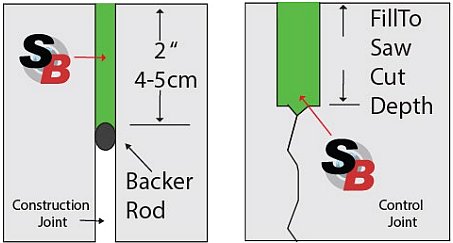
Saw-Cut Control Joints
Per American Concrete Institute, ACI 504R-12
- A minimum 3:2 (depth:width) shape factor is preferred
- Please refer to the ACI Guideline for detailed recommendations
- Depth of joint to be 2″ (50 mm)
- For joints exceeding 2″ (50 mm) use backer rod or other approved method to create 2″ (50mm) joint depth
- Do not use backer rod in joints with depths less than 2″ (50mm)
- Joint width typically predetermined by engineer during planning and construction





























